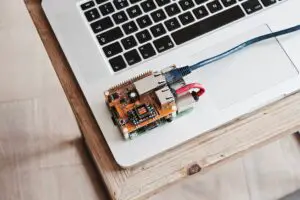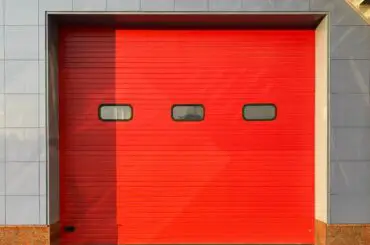How To Run Ethernet Cable In A Finished House? In today’s hyper-connected world, having a stable and fast internet connection isn’t just a luxury—it’s a necessity. While wireless Wi-Fi connections offer the convenience of mobility, a wired internet connection, particularly through Ethernet cables, brings forth unparalleled speed, stability, and reliability. Such a connection ensures that your important video calls don’t freeze, online games don’t lag, and large data transfers occur without a hiccup.
When it comes to retrofitting a finished home with Ethernet cables, homeowners face a unique set of challenges. Unlike houses still in the construction phase, where open walls and clear pathways make installation seamless, a finished house presents obstacles such as intact drywalls, existing electrical setups, and established aesthetics. The contrast between setting up Ethernet during the construction phase versus post-completion is evident in the complexities and intricacies involved.
Contents
Why Choose Ethernet Over Wi-Fi?
In the age of wireless devices and the Internet of Things (IoT), the idea of plugging into a physical network might seem somewhat archaic. But before you dismiss the relevance of Ethernet in favor of its more mobile counterpart, Wi-Fi, consider the compelling advantages that come with a wired connection.
- Speed Consistency: Wi-Fi connections are susceptible to a myriad of issues that can cause inconsistent speeds. Distance from the router, physical barriers like walls, and interference from other devices can all cause fluctuations in your internet speed. Ethernet, on the other hand, provides a consistent speed, ensuring that your connection remains stable regardless of where you are in the house. This is particularly beneficial for activities that demand high bandwidth, such as streaming 4K videos or engaging in online gaming.
- Reliability and Reduced Interference: Ethernet connections are far less prone to interference compared to Wi-Fi. While Wi-Fi signals can be affected by everything from your microwave oven to your neighbor’s wireless network, Ethernet connections remain isolated from such disruptions. This translates to fewer dropouts, less buffering, and an overall more reliable connection.
- Enhanced Security: One of the notable benefits of opting for a wired connection is the enhanced security it offers. While Wi-Fi networks can be vulnerable to eavesdropping, especially if not properly secured, Ethernet is inherently more secure. Without access to the physical network, potential intruders have fewer avenues to exploit. This doesn’t mean Ethernet is impervious to attacks, but it adds an extra layer of security that Wi-Fi often lacks.

Materials and Tools Needed So, How To Run Ethernet Cable In A Finished House?
If you’re committed to the idea of setting up a wired network in your home, you’ll need the right tools and materials. A well-prepared toolbox can save you from unexpected hiccups and make the installation process smooth. Here’s what you’ll need:
-
Types of Ethernet Cables
:
-
- Cat 5e: Suitable for most household applications, Cat 5e can support speeds up to 1 Gbps.
- Cat 6: A step up from Cat 5e, this cable supports speeds up to 10 Gbps but for shorter distances (up to 55 meters).
- Cat 7: With a maximum speed of 10 Gbps and a range of up to 100 meters, Cat 7 is shielded, ensuring minimal interference and crosstalk.
It’s essential to choose the right type of cable based on your current and anticipated future needs. While Cat 5e might be sufficient for many, investing in Cat 6 or Cat 7 can offer more longevity as internet speeds continue to rise.
-
Additional Essential Tools and Materials
:
-
- Wall Plates: These will provide the finishing touch, making the Ethernet ports seamlessly blend into your walls.
- Ethernet Jacks: These are the actual ports where you’ll plug in your Ethernet cable.
- Fish Tape or Pull Rods: Essential for guiding the Ethernet cable through walls and tight spaces.
- Drill and Long Drill Bits: Required for making holes to run the cables, especially if you’re routing them between floors or rooms.
- Punch Down Tool: Used to securely connect the Ethernet cable to the jacks.
- Ethernet Cable Crimper: In case you need to create custom-length Ethernet cables.
- Utility Knife: Useful for stripping the Ethernet cable.
- Cable Tester: To test connections and ensure they are working correctly.
Ensuring you have all these tools and materials on hand before you begin can make the process of running Ethernet cable in a finished house much more efficient. Preparing ahead of time reduces the chances of unnecessary interruptions and makes for a smoother installation experience.
Planning Your Installation
Before diving into the physical work of laying down Ethernet cables, proper planning is indispensable. Installing Ethernet in a finished house isn’t a mere plug-and-play process; it requires foresight to ensure minimal disruptions and optimal results. Here’s how you can chart out your course:
-
Deciding on the Locations of Ethernet Outlets
:
-
- Purpose and Usage: Begin by identifying rooms or specific spots where wired internet will be most beneficial. Think about locations of desktop computers, gaming consoles, or workstations.
- Accessibility: Consider how easy it will be to connect devices to the Ethernet ports. Avoid placing them behind heavy furniture or in hard-to-reach corners.
- Aesthetics: While functionality is paramount, it’s also worth considering how the outlets will look in each room. Opt for spots that are discreet yet accessible.
-
Mapping Out the Most Efficient Route
:
-
- Direct Paths: The shorter the cable route, the better the signal quality and speed. Identify the most direct paths between your central internet source (like a modem or router) and the decided outlets.
- Centralized Hubs: In larger homes, it might be useful to have a centralized hub or switch in a closet or utility room, from which cables can be distributed to different rooms.
-
:
-
- Structural Barriers: Walls, especially those made of brick or concrete, can be challenging to drill through. Identify which walls are easier to work with and consider routes that minimize the need for drilling through tough barriers.
- Existing Installations: Be wary of other installations like electrical wiring, plumbing, or HVAC systems. You wouldn’t want to accidentally drill into a water pipe or an electrical line. Using tools like stud finders can help avoid such mishaps.
- Flooring and Ceilings: If your house spans multiple floors, think about whether you’ll run cables up through the ceilings or down through the floors. Basements and attics can often provide easier access routes.
Planning is half the battle when figuring out how to run Ethernet cable in a finished house. A well-charted plan can save time, reduce costs, and ensure that the result is both functional and aesthetically pleasing.
Step-by-Step Guide on How to Run the Cable
After the planning phase, the actual hands-on process of installing the Ethernet cable begins. By following a structured approach, you can ensure that the cable is safely and efficiently laid out.
-
Preparing the Area
:
- Safety Precautions: Before starting, turn off any electricity in the areas where you’ll be working, especially if you’re drilling near electrical outlets or switches. Wear protective eyewear and gloves to safeguard against dust and sharp objects.
- Cutting Outlet Holes: Mark the spots on the wall where you’ve planned your Ethernet outlets. Using a utility knife or a drywall saw, cut out the required holes, ensuring they’re sized right for the wall plates you’ve chosen.
-
Drilling and Feeding the Cable
:
- Techniques for Drilling Safely: Always use a stud finder to locate studs and avoid drilling directly into them. Be aware of other potential hazards behind the wall like electrical wiring or plumbing. Using a drill with a long bit, make pilot holes first to ensure accuracy.
- Tips for Using Fish Tape or Pull Rods: Begin by inserting the fish tape at the starting point and guiding it towards the exit hole. Once it’s through, attach your Ethernet cable to the fish tape using electrical tape, ensuring a secure connection. Gently pull the fish tape back, guiding the Ethernet cable along with it. Having a partner can be beneficial, with one person feeding the cable and the other pulling the fish tape.
-
Securing and Protecting the Cable
:
- Proper Ways to Staple or Secure the Cable: Use cable-specific staples or clips to secure the Ethernet cable along its route. Ensure the staples are snug but not too tight, as pinching can damage the cable’s internal wiring.
- Avoiding Pinches and Bends: When laying out the cable, ensure there are no sharp bends, as these can degrade signal quality. Use gentle curves instead. Also, keep the cable away from any tight spaces or corners where it might get pinched or damaged.
Following this step-by-step guide will ensure that you lay out your Ethernet cable effectively while maintaining the integrity and quality of the connection.
Setting Up Wall Plates and Ethernet Jacks
Once the Ethernet cable is properly routed to its destination, the next step is to create a clean and functional termination point. This means setting up the wall plates and Ethernet jacks. Here’s how you can achieve a professional-looking installation:
-
Stripping the Ethernet Cable
:
-
- Start by using a utility knife or a specialized cable stripper to carefully remove about an inch of the outer insulation of the Ethernet cable. Make sure not to nick or cut the inner wires.
- Once the outer sheath is removed, you’ll see multiple twisted pairs of wires. Untwist and straighten each pair, arranging them in the order required for your connection (usually following the T568A or T568B wiring standard).
-
Punching Wires into the Jacks
:
-
- Take the Ethernet jack and locate the color-coded slots. These slots correspond to each wire of the Ethernet cable.
- Using a punch-down tool, insert each wire into its respective slot on the jack. The tool will secure the wire in place and trim any excess length. Ensure each wire is firmly seated and that the colors match the diagram on the jack.
-
Attaching Wall Plates to the Wall
:
-
- Once all wires are punched down into the jack, attach the jack to the wall plate. This is typically done by snapping it in place.
- Position the wall plate over the hole where the Ethernet cable emerges and secure it to the wall using screws. Most wall plates come with their screws, but if not, ensure you use ones that are of appropriate length to avoid damaging the wall or the cable behind it.

Testing and Troubleshooting
After diligently routing, securing, and setting up your Ethernet connections, it’s crucial to ensure they function as expected. While meticulous installation can often result in a successful first-time setup, occasionally issues might arise. Here’s how to verify the integrity of your connections and troubleshoot any problems:
-
Using a Computer or Network Tester to Check Connections
:
-
- Computer Test: Simply connect a computer to the newly installed Ethernet outlet using an Ethernet cable. Check for a network connection on the computer. If connected, try browsing the internet or conducting a speed test to ensure the connection quality is optimal.
- Network Tester: These are specialized devices designed to test the integrity of Ethernet connections. By connecting it to both ends of the Ethernet line, the tester will confirm if all the internal wires are properly connected and indicate any faults.
-
Common Issues and How to Solve Them
:
-
- No Connectivity: If there’s no connection, ensure that the other end of the Ethernet cable is properly connected to a router or switch. Also, verify that the wiring order of the punched-down wires matches the standard (T568A or T568B) on both ends.
- Intermittent Connection: This could be due to a pinched cable or sharp bends. Inspect the entire length of the cable, ensuring it runs smoothly and is free from damage or extreme bends.
- Reduced Speeds: If the connection is active but speeds are below expectation, double-check the type of Ethernet cable used. For instance, a Cat 5e might not deliver the same speeds as a Cat 6 or Cat 7.
- Cross-talk or Interference: This could be a result of cables running parallel to electrical lines or other interference sources. Ensure your Ethernet cable is appropriately shielded, and try rerouting it away from potential interference sources.
Always remember, when troubleshooting, to work systematically. Start by confirming the basics – that cables are correctly connected and that devices are powered on. Then, move on to more specific issues. This methodical approach will often lead you directly to the root of the problem, enabling swift resolution.
Finishing Up
Once your Ethernet cables are successfully installed and tested, the final touches are all about aesthetics and safety. It’s essential to leave your home in a state that looks neat and ensures the longevity and safety of your installation. Here’s how to wrap up your Ethernet installation project:
-
Patching Up Holes or Imperfections
:
-
- Drywall Patching: If you’ve made any holes or incisions in the drywall during the installation process, now’s the time to patch them up. Use spackling paste or a drywall patch kit to fill in and smooth out any imperfections. Once dried, sand the patched areas for a smooth finish.
- Painting: To make the repair virtually invisible, repaint the patched areas to match the rest of the wall. It’s a good idea to keep some leftover paint from previous projects for such touch-ups.
-
Safety Checks to Ensure Everything is Secure and Tidy
:
-
- Cable Checks: Inspect the entire run of the Ethernet cable, ensuring it’s securely fastened and not dangling or in areas where it could be a trip hazard.
- Outlet Inspections: Ensure that all wall plates are securely attached to the wall and that there are no exposed wires. The Ethernet jacks should be firmly snapped into the plates.
- General Safety: If you’ve had to move furniture or other items during installation, double-check to make sure everything is returned to its place and positioned securely. Ensure that any tools or sharp objects are stored away safely to prevent accidents.
Conclusion
Embarking on the journey of running Ethernet cable in a finished house might seem daunting initially, but the rewards, as we’ve explored, are significant. A wired connection offers unparalleled speed consistency, reliability, and enhanced security. These are benefits that can transform your home into a digital fortress, ensuring every online activity, from work to entertainment, is smooth and uninterrupted.
We’ve walked through every step of the process, from planning to the finishing touches. Each phase has its challenges, but with the right tools, materials, and a bit of patience, it’s a wholly achievable endeavor for most homeowners.
However, if at any point the task seems too complex or outside your comfort zone, there’s no shame in seeking professional help. Sometimes, an expert’s touch can ensure the job is done quickly and correctly, saving you potential headaches down the line.
Whether you choose to DIY or hire a pro, the critical takeaway is the value of a wired Ethernet connection in a modern home. As we continue to embrace the digital age, ensuring your home’s connectivity is top-notch will always be a worthwhile investment.





